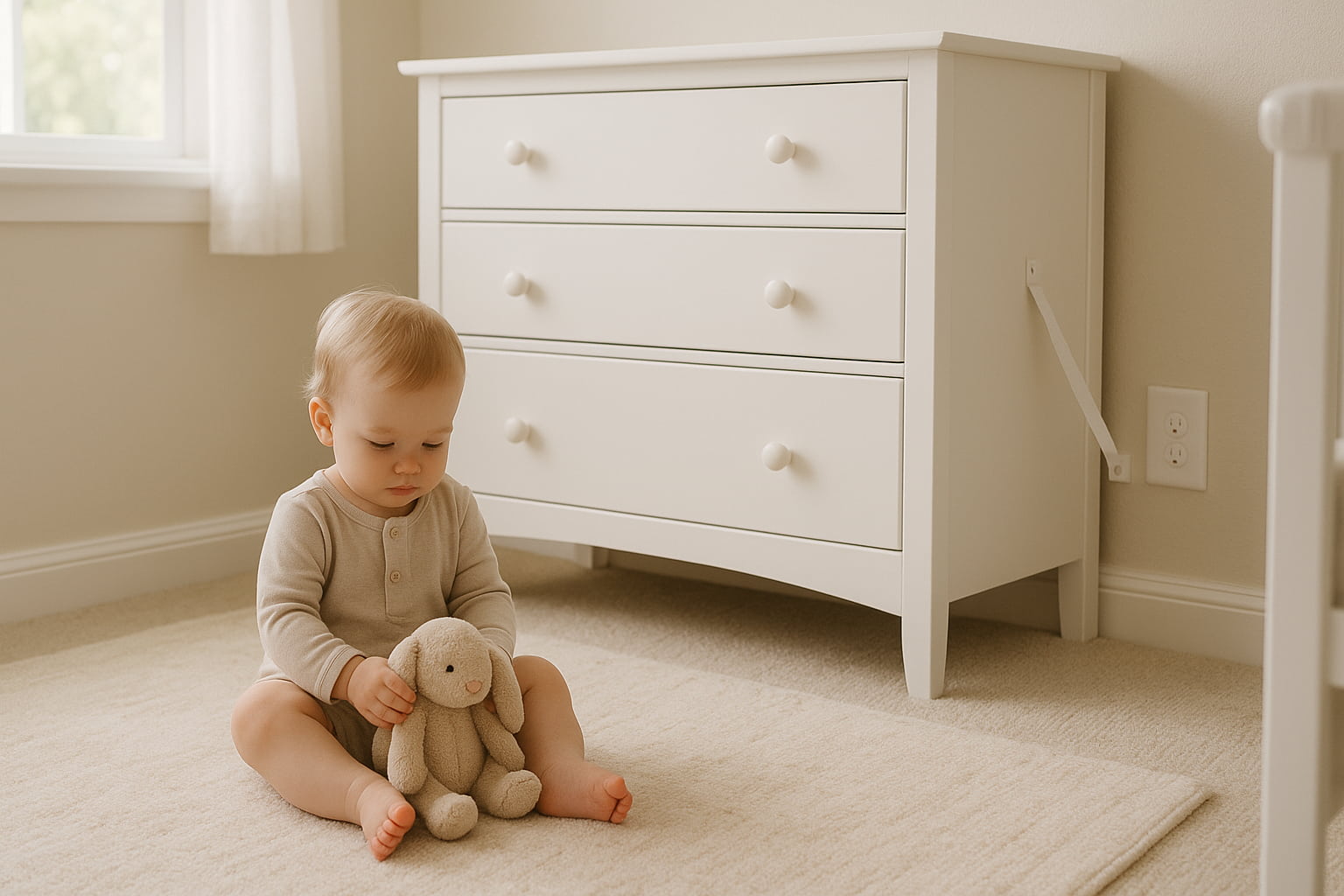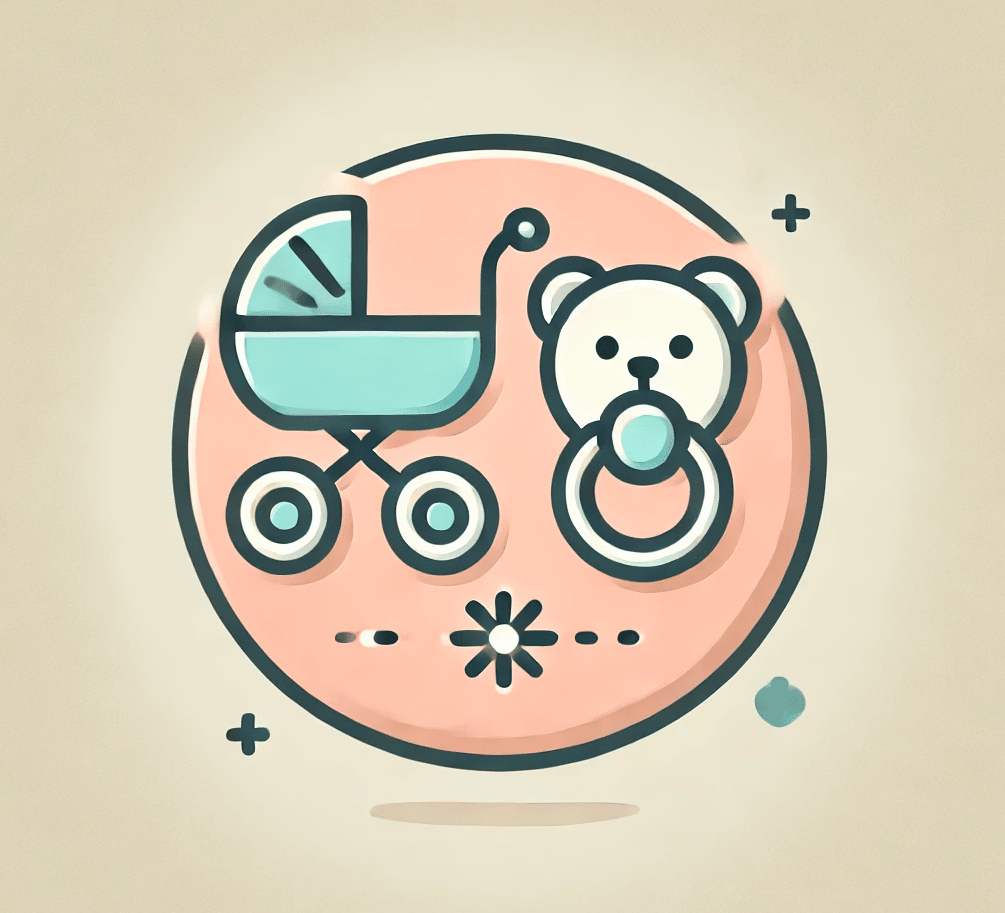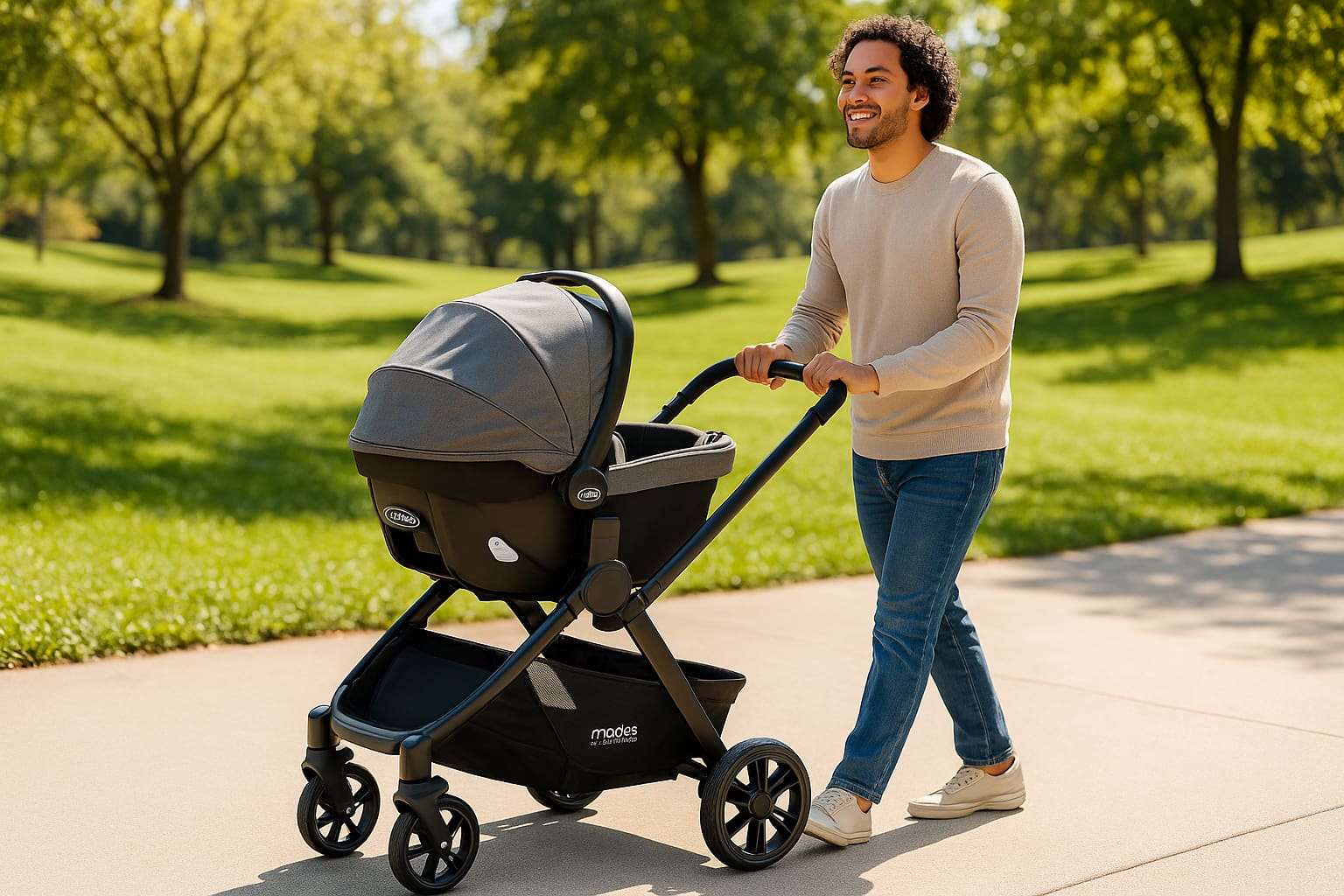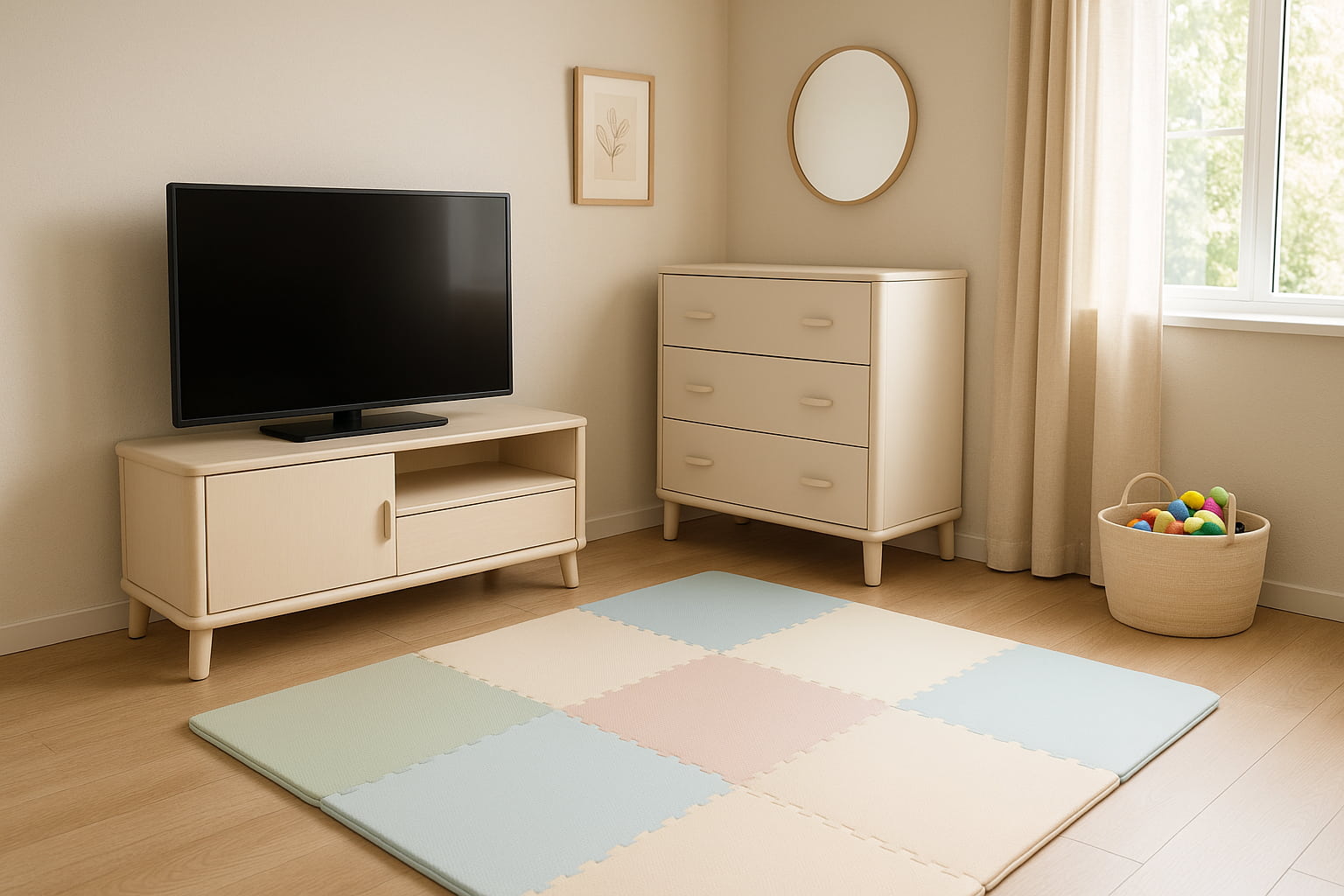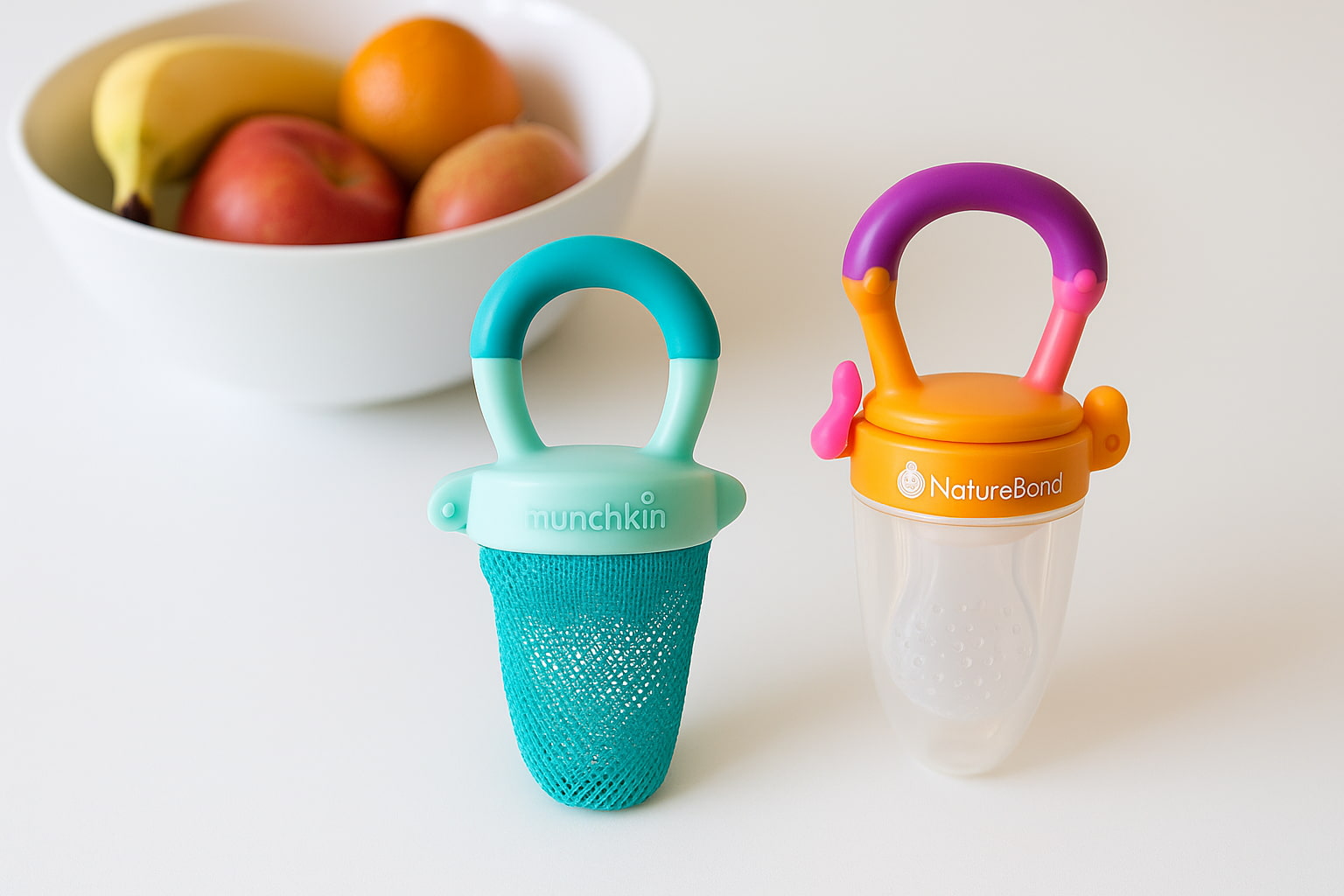If you’ve got a baby or toddler at home, you already know that they love to climb, pull, and explore. But what happens if a heavy shelf or dresser topples over? That’s where freestanding vs mounted furniture safety becomes a serious issue.
Many parents don’t realize how dangerous unanchored furniture can be. One small tug and a piece of furniture can fall fast, causing serious harm. In this guide, we’ll talk through everything you need to know to keep your little one safe.
Let’s break it all down in simple terms. We’ll compare freestanding and mounted furniture, explain the risks, and give you smart safety tips for every room.
🆚 What Is Freestanding vs Mounted Furniture?
Let’s start with the basics. Freestanding furniture is any item that stands on its own, like a bookcase, dresser, or cabinet. These don’t get attached to the wall. You can move them anytime.
Mounted furniture, on the other hand, is secured using anchors or wall straps. These are often screwed into wall studs to keep them from tipping.
🟢 Freestanding: Easy to move, but can fall over
🟢 Mounted: Stays in place and offers better safety
At first, it may not feel like a big deal. But once your child starts climbing, the difference between freestanding and mounted furniture could be life-saving.
⚠️ Why Freestanding Furniture Poses Tipping Hazards
Babies love to explore, and tall furniture is perfect for pulling up and climbing. But when it’s not mounted, even sturdy furniture can tip.
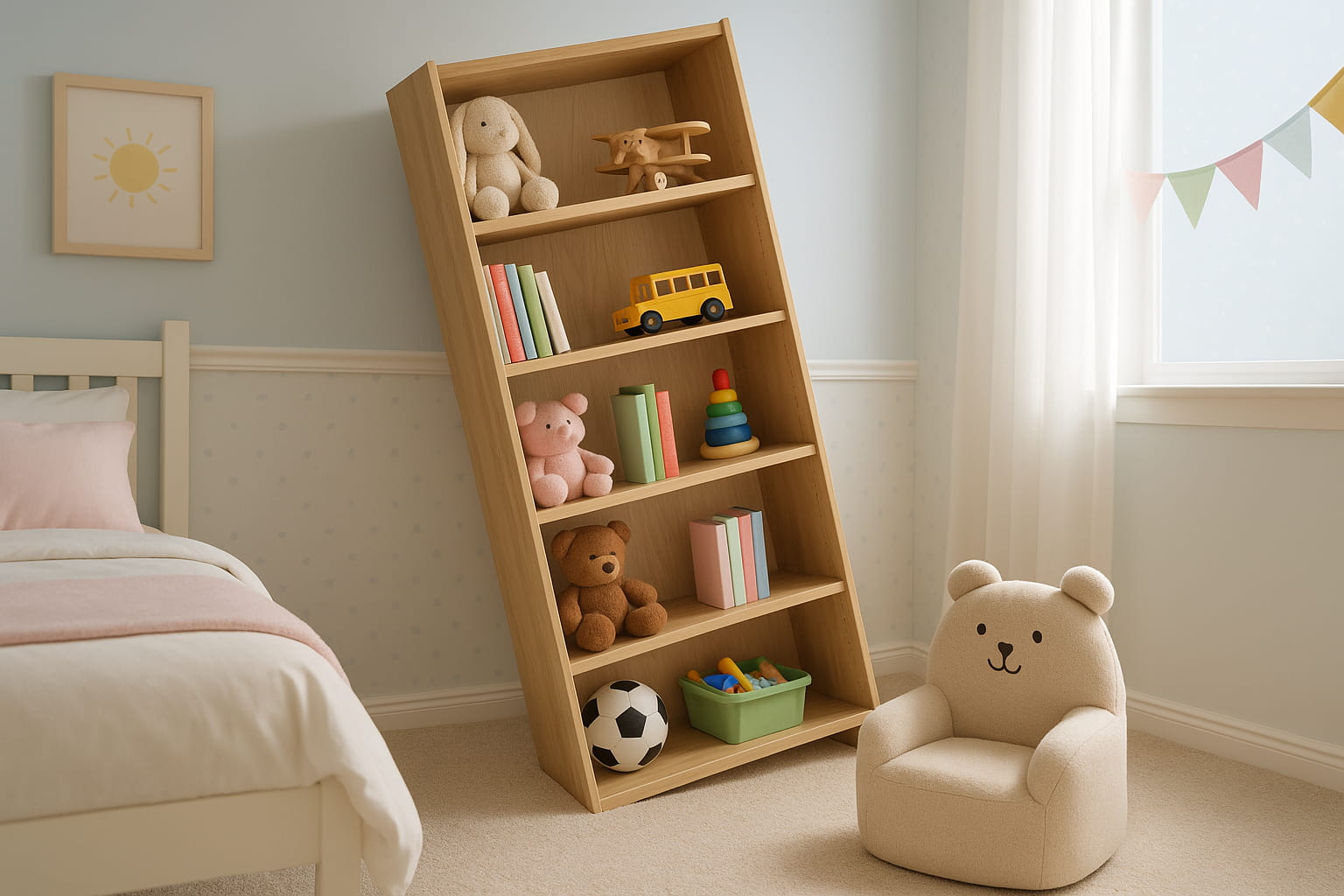
Every year, thousands of children are hurt this way. And the problem often comes from freestanding furniture tipping hazards, like wobbly bookcases or tall dressers.
Here’s why tipping happens:
🔸 Kids pull on drawers or shelves
🔸 Heavy items are stored up high
🔸 Furniture isn’t stable on carpets or uneven floors
The result? One hard tug and it could crash down.
👉 Curious how to anchor furniture the right way? Check out this guide on Wall Anchors vs Anti-Tip Straps
🔩 How Anchoring Furniture Protects Babies
So, how do you stop furniture from falling? The answer is simple: anchor it.
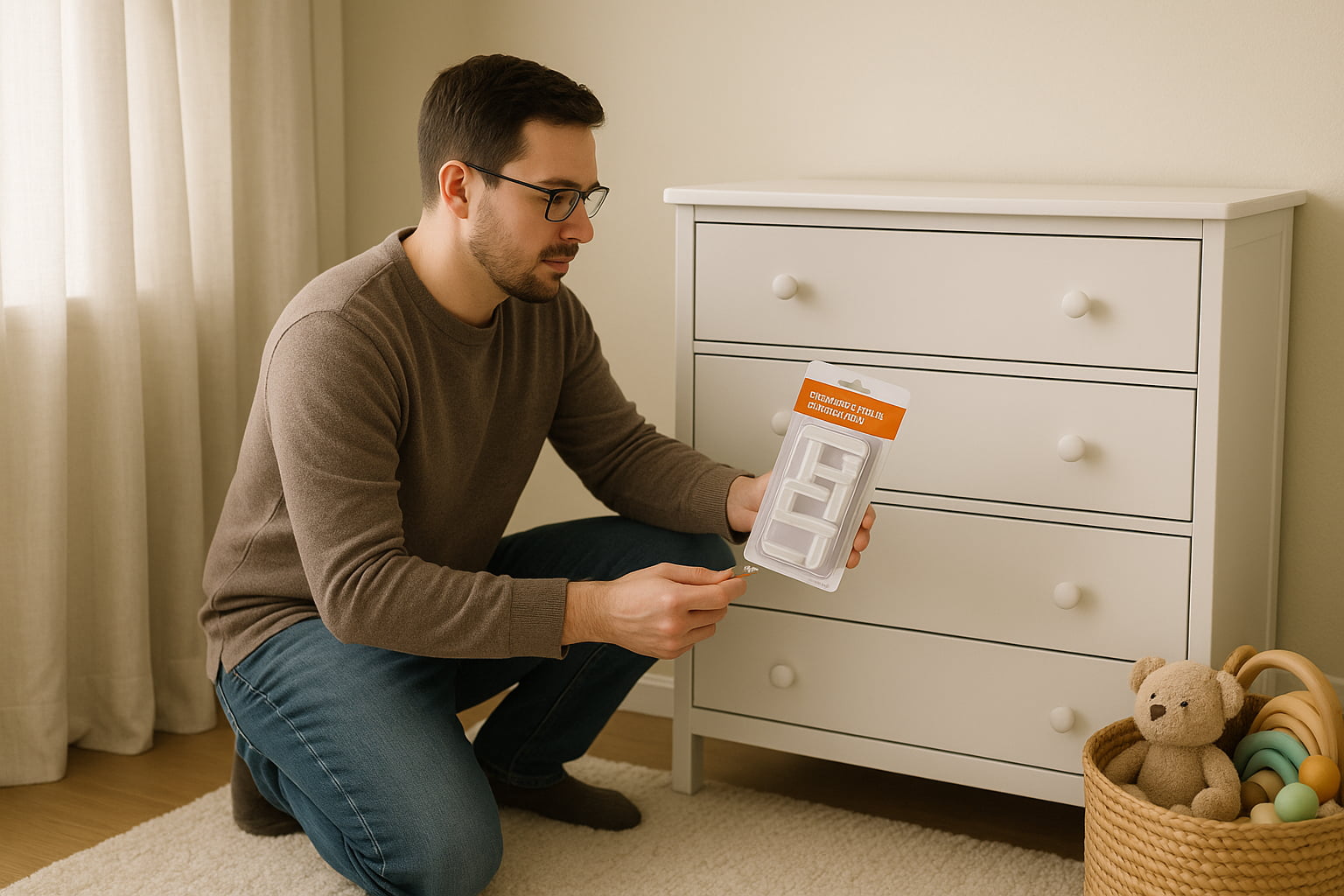
Anchoring furniture for baby safety means attaching items to the wall. This way, no matter how much your child pulls or climbs, it won’t tip over.
You can anchor furniture by:
🔸 Using L-brackets or metal straps
🔸 Screwing into wall studs
🔸 Choosing anti-tip furniture kits for easier installs
And don’t worry, there are even drill-free options if you rent or don’t want to damage your walls.
Safety experts say: If your baby can stand or walk, it’s time to anchor.
🪑 Pros and Cons of Freestanding Furniture
Freestanding furniture can be stylish and simple to move, but it’s not always the safest.
Pros
- Easy to rearrange
- No tools needed
- Great for renters
Cons
- High tipping risk
- Less secure as kids grow
- No built-in safety features
It might work fine in adult spaces, but when little ones start climbing, freestanding becomes risky. It’s okay to use it if you babyproof carefully.
👉 Looking for a full-room guide? Check out the Best Babyproofing Solutions for Furniture in 2025
🧱 Pros and Cons of Mounted Furniture
Mounted furniture is a top choice for families with babies and toddlers. It gives you peace of mind and strong protection.
Pros
- Prevents tipping accidents
- Stays secure during play
- Matches pediatric safety advice
Cons
- Needs tools and time to install
- May leave wall marks
- Hard to move around
If you’re serious about safety, mounting is worth the effort. Use straps, brackets, or kits that attach to wall studs for maximum hold.
📊 Which Option is Safer by the Numbers?
The data doesn’t lie; mounted furniture is much safer.
A report from the CPSC says over 11,500 children go to the ER each year because of furniture tip-overs. Most of those injuries come from unanchored freestanding furniture.
Here’s what the stats show:
🟠 82% of fatal incidents involve kids under 6
🟠 70% happen in bedrooms or living rooms
🟠 90% could have been prevented by anchoring
If you’re still deciding between setups, this section alone might convince you.
🏡 Smart Babyproofing Tips for Every Room
Let’s talk about real solutions. Whether your furniture is freestanding or mounted, these furniture stability tips can help.
🛏️ In Bedrooms:
✔️ Anchor dressers and nightstands
✔️ Use drawer locks
📚 In Living Rooms:
✔️ Secure bookshelves and media consoles
✔️ Keep heavy items on lower shelves
🧸 In Play Areas:
✔️ Avoid tall freestanding storage
✔️ Use corner guards on sharp edges
And if you’re renting, use childproof furniture without drilling, using heavy-duty adhesive anchors or friction-based kits.
📦 Fact Box: Real Stats About Tipping Injuries
📉 According to Safe Kids Worldwide, every 45 minutes, a child visits the ER because of a TV or furniture tip‑over and a child dies from such an incident every three weeks.
Read the full report on TV and furniture tip‑overs
👉 Want to avoid dangerous babyproofing mistakes? Read: Common Babyproofing Mistakes to Avoid
🛠️ Top Products for Anchoring and Babyproofing Furniture
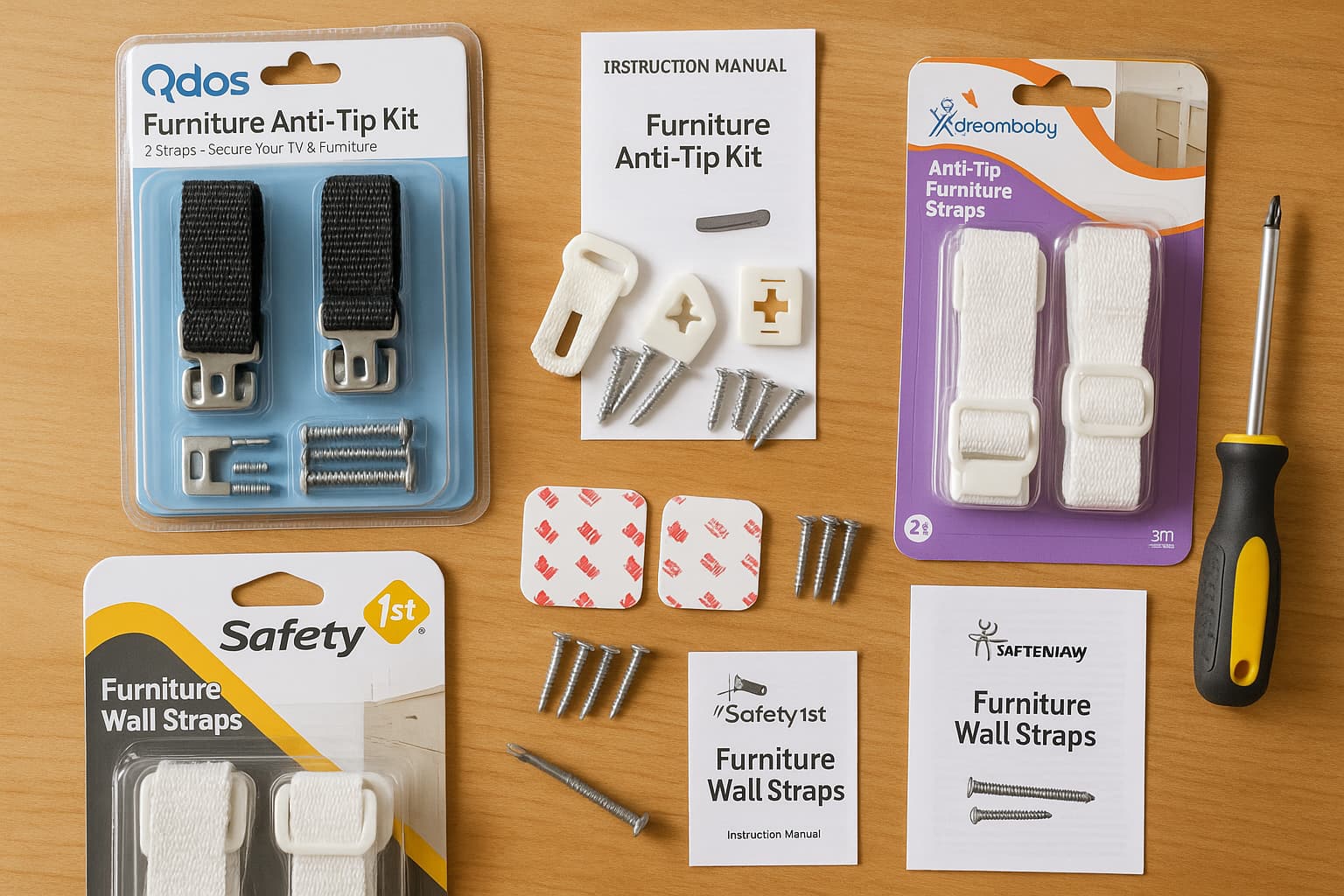
Here are some tried-and-true brands that make babyproofing easier:
| Product | Type | Why Parents Love It |
| Qdos Anti-Tip Kit | Wall Anchor Strap | Easy install, strong hold |
| Dreambaby Adhesive Anchors | No-Drill Option | Great for renters |
| Hangman Anti-Tip Kit | Steel Cable | Heavy-duty for large items |
| Safety 1st Furniture Straps | Budget Option | Trusted and affordable |
These tools can work for dressers, bookshelves, and more. Use them to secure furniture in rooms where your baby crawls or walks.
👉 Want to see how Qdos stacks up? Check our full review: Qdos Anti-Tip Furniture Kit
✅ Final Verdict: Freestanding vs Mounted Furniture Safety
When it comes to freestanding vs mounted furniture safety, mounted furniture wins, hands down.
Freestanding units might look nice and be easier to move, but they pose real risks. If you don’t want your little one getting hurt, anchoring is the safest path forward.
Whether you use a drill or go drill-free, the goal stays the same: prevent furniture from falling on your child. If a piece is taller than 30 inches or placed in a kid’s space, mount it.
🧠 Recap: What Every Parent Should Remember
✔️ Freestanding furniture is riskier, especially for toddlers.
✔️ Mounting furniture reduces tipping and protects kids.
✔️ Use wall studs and anti-tip furniture kits for strong safety.
✔️ Babyproof every room where your child can crawl or climb.
It’s not about being overprotective. It’s about being prepared.
⚠️ Disclaimer
This content is for informational purposes only and does not replace professional advice.
🖋️ Written by Find For Baby
This guide was created by Find For Baby, your trusted source for babyproofing advice.
